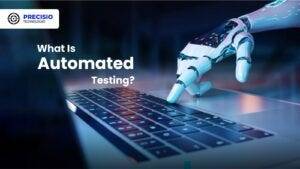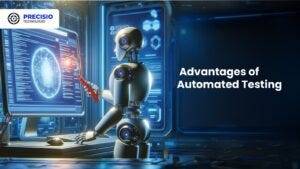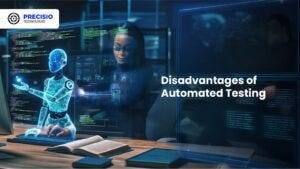#agile methodology Process
Explore tagged Tumblr posts
Text
The Agile Framework is an incremental and iterative method of developing software that focuses on teamwork, adaptability, and continuous improvement.
#agile testing#agile principles#agile methodology Process#agile testing methods#agile methodology#mobileapp#mobileappdevelopment#ethicsfirst#habilelabs
0 notes
Text
#Adaptive Software Development#Agile Methodologies#Software Development Process#Iterative Development#Project Management in Software Engineering
0 notes
Text
Best Practices in Software Development: Writing Clean and Efficient Code
Introduction
In today's technology-driven world, software development is pivotal for businesses and individuals aiming to innovate and streamline operations. It encompasses the entire process of designing, coding, testing, and maintaining software applications to meet specific needs. Whether you're a startup, a large corporation, or an individual entrepreneur, investing in software development ensures efficient processes and a competitive edge.
Types of Software Development
Front-End Development
Focuses on the user interface and experience, utilizing technologies like HTML, CSS, and JavaScript to create interactive and visually appealing applications.
Back-End Development
Manages server-side logic, databases, and application integration, ensuring that the software functions correctly behind the scenes.
Full-Stack Development
Combines both front-end and back-end development skills, enabling developers to build comprehensive applications from start to finish.
Mobile Application Development
Involves creating applications specifically designed for mobile devices, using platforms like iOS and Android.
Embedded Systems Development
Focuses on developing software for specialized hardware systems, such as automotive controls or medical devices.
Key Technologies in Software Development
Programming Languages: JavaScript, Python, Java, C#, and C++ are among the most commonly used languages.
Frameworks and Libraries: React, Angular, Django, and .NET aid in building robust applications efficiently.
Databases: Systems like MySQL, PostgreSQL, and MongoDB are used to store and manage data effectively.
Version Control Systems: Tools like Git help in tracking changes and collaborating on codebases.
Benefits of Professional Software Development Services
Customized Solutions: Tailored software meets specific business requirements, enhancing efficiency.
Scalability: Professionally developed software can grow with your business needs.
Security: Implementing best practices ensures data protection and minimizes vulnerabilities.
Maintenance and Support: Ongoing support ensures the software remains up-to-date and functional.
How to Choose the Right Software Development Service Provider
Experience and Expertise: Look for providers with a proven track record in your industry.
Portfolio and Case Studies: Review past projects to assess quality and relevance.
Client Testimonials: Positive feedback indicates reliability and satisfaction.
Communication and Collaboration: Ensure they have a transparent process and are open to feedback.
Common Challenges in Software Development
Requirement Changes: Evolving needs can lead to scope creep if not managed properly.
Technical Debt: Compromises in code quality for quick delivery can cause future issues.
Integration Issues: Ensuring new software works seamlessly with existing systems.
Resource Constraints: Limited time, budget, or skilled personnel can impact project success.
Future Trends in Software Development
Artificial Intelligence and Machine Learning: Integrating AI to create smarter applications.
Cloud Computing: Leveraging cloud platforms for scalable and flexible solutions.
DevOps Practices: Combining development and operations for faster delivery cycles.
Internet of Things (IoT): Developing software for interconnected devices.
Conclusion
Investing in professional software development is crucial for organizations aiming to stay competitive and efficient in the modern landscape. By leveraging the right technologies and expertise, businesses can create solutions that drive success and innovation.
FAQs
What is the average cost of software development services?
Costs vary widely based on project complexity, scope, and location of the development team. It's best to obtain quotes from multiple providers.
How long does it take to develop a software application?
Timelines depend on the project's size and complexity; simple applications may take a few months, while larger systems can take a year or more.
What is the difference between front-end and back-end development?
Front-end development deals with the user interface and experience, while back-end development focuses on server-side logic and database interactions.
Can I update my software application after development?
Yes, regular updates are essential for adding features, improving performance, and ensuring security.
Why is mobile responsiveness important in software development?
With the increasing use of mobile devices, ensuring applications work well on various screen sizes enhances user experience and accessibility.
#Software Development Services#•#Software Development Languages#Software Development Outsourcing#Agile Software Development#Software Development Lifecycle#Software Development Methodologies#Software Development Process
0 notes
Text
What is Agile Software Development Methodology?
Learn about Agile software development methodology, its principles, benefits, and how it enhances flexibility, collaboration, and faster delivery.
In today’s fast-paced tech world, Agile software development methodology has become the backbone for delivering high-quality software solutions that adapt quickly to changing market demands and project requirements. This blog will explore Agile methodology in depth, highlighting its importance, principles, and the benefits it offers to businesses and development teams alike. Why is Agile…
#Agile Development#Agile Methodology#Agile Principles#Agile Process#Agile Workflow#Digital Transformation#Project Management#Scrum#Software Development#Software Engineering
0 notes
Text
IMPLEMENTING ORGANIZATIONAL CHANGE MANAGEMENT STRATEGIES IN HEALTHCARE INSTITUTIONS
IMPLEMENTING ORGANIZATIONAL CHANGE MANAGEMENT STRATEGIES IN HEALTHCARE INSTITUTIONS 1.1 Introduction Organizational change is inevitable in healthcare institutions due to the dynamic nature of the industry, which is influenced by technological advancements, regulatory shifts, evolving patient needs, and economic pressures. Effective change management is critical to ensuring that healthcare…
#Agile methodologies#Change Impact Assessment#Change Leadership#Change management#Change Readiness#Communication Strategy#Continuous improvement#Cultural Change#Employee Buy-In#Healthcare transformation#Implementation Framework#IMPLEMENTING ORGANIZATIONAL CHANGE MANAGEMENT STRATEGIES IN HEALTHCARE INSTITUTIONS#organizational change#Patient-centered care#Performance metrics#PROCESS IMPROVEMENT#Project Management#Resistance to change#Stakeholder engagement#TECHNOLOGY ADOPTION#Training And Development
0 notes
Text
Agile Software is a Software Development Methodologies. That provides team collaboration, flexibility, and customer satisfaction. Agile Software Development delivery product quickly & frequently. It involves collaboration between the development team and the customer to ensure that product meets the customer.
0 notes
Text
Unlocking Creativity: Unconventional Approaches to Enhancing Your Process Analysis
Enhancing your process analysis can lead to greater efficiency and improved outcomes. Is there a way to make this complex task more dynamic and engaging? Let's explore some creative strategies that can transform your process analysis approach.
Embrace Unconventional Tools and Techniques
Have you considered incorporating mind mapping or brainstorming sessions into your process analysis routine? These tools can help you visualize connections and identify patterns that may not be immediately apparent.
Think Outside the Box
What if you approached process analysis as a detective solving a mystery? By adopting this mindset, you can uncover hidden insights and uncover new perspectives that lead to innovative solutions.
Foster Collaboration and Diversity
Engaging with colleagues from different backgrounds and experiences can bring fresh ideas to the table. How can you leverage the power of diversity to enhance your process analysis efforts?
Experiment and Iterate
Just like a scientist testing hypotheses, don't be afraid to experiment with different approaches to process analysis. By embracing a mindset of continuous improvement, you can refine your methods and achieve better results over time.
Conclusion
By infusing creativity into your process analysis workflow, you can unlock new possibilities and drive meaningful change. Ready to take your analysis to the next level? Start thinking outside the box and see where your creativity takes you! Remember, enhancing your process analysis can lead to greater efficiency and improved outcomes. By incorporating unconventional tools and techniques, thinking outside the box, fostering collaboration, and embracing experimentation, you can transform your approach and achieve superior results. Visit more information for your website
0 notes
Text

Essential of SDLC: A Comprehensive Guide to Fundamentals, Phases, and Methodologies
Unlock the secrets of the Software Development Life Cycle with 'Decoding SDLC,' offering a comprehensive exploration of key fundamentals and methodologies.
#software development#sdlc#fundamentals#phases#agile methodologies#waterfall#development process#project management
0 notes
Text
Is my job safe against AI? ChatGPT vs Scrum Master & Agile Coach
In an era defined by rapid technological advancements, the roles of Scrum Masters and Agile Coaches are not immune to the impact of artificial intelligence (AI). As organizations strive to optimize their processes and embrace agile methodologies, it’s natural to wonder if these roles are at risk. However, a closer look reveals that Scrum Masters and Agile Coaches possess unique qualities that are…

View On WordPress
#adaptability#Agile Coach#Agile Methodologies#Agile Processes#Agile Transformation#AI Impact#Automation#Continuous Improvement#Data Analysis#Emotional Intelligence#Human-Centered#Interpersonal Skills#leadership#problem-solving#Scrum Master#Team Collaboration#Technology
0 notes
Text

Women pulling Lever on a Drilling Machine, 1978 Lee, Howl & Company Ltd., Tipton, Staffordshire, England photograph by Nick Hedges image credit: Nick Hedges Photography
* * * *
Tim Boudreau
About the whole DOGE-will-rewrite Social Security's COBOL code in some new language thing, since this is a subject I have a whole lot of expertise in, a few anecdotes and thoughts.
Some time in the early 2000s I was doing some work with the real-time Java team at Sun, and there was a huge defense contractor with a peculiar query: Could we document how much memory an instance of every object type in the JDK uses? And could we guarantee that that number would never change, and definitely never grow, in any future Java version?
I remember discussing this with a few colleagues in a pub after work, and talking it through, and we all arrived at the conclusion that the only appropriate answer to this question as "Hell no." and that it was actually kind of idiotic.
Say you've written the code, in Java 5 or whatever, that launches nuclear missiles. You've tested it thoroughly, it's been reviewed six ways to Sunday because you do that with code like this (or you really, really, really should). It launches missiles and it works.
A new version of Java comes out. Do you upgrade? No, of course you don't upgrade. It works. Upgrading buys you nothing but risk. Why on earth would you? Because you could blow up the world 10 milliseconds sooner after someone pushes the button?
It launches fucking missiles. Of COURSE you don't do that.
There is zero reason to ever do that, and to anyone managing such a project who's a grownup, that's obvious. You don't fuck with things that work just to be one of the cool kids. Especially not when the thing that works is life-or-death (well, in this case, just death).
Another case: In the mid 2000s I trained some developers at Boeing. They had all this Fortran materials analysis code from the 70s - really fussy stuff, so you could do calculations like, if you have a sheet of composite material that is 2mm of this grade of aluminum bonded to that variety of fiberglass with this type of resin, and you drill a 1/2" hole in it, what is the effect on the strength of that airplane wing part when this amount of torque is applied at this angle. Really fussy, hard-to-do but when-it's-right-it's-right-forever stuff.
They were taking a very sane, smart approach to it: Leave the Fortran code as-is - it works, don't fuck with it - just build a nice, friendly graphical UI in Java on top of it that *calls* the code as-is.
We are used to broken software. The public has been trained to expect low quality as a fact of life - and the industry is rife with "agile" methodologies *designed* to churn out crappy software, because crappy guarantees a permanent ongoing revenue stream. It's an article of faith that everything is buggy (and if it isn't, we've got a process or two to sell you that will make it that way).
It's ironic. Every other form of engineering involves moving parts and things that wear and decay and break. Software has no moving parts. Done well, it should need *vastly* less maintenance than your car or the bridges it drives on. Software can actually be *finished* - it is heresy to say it, but given a well-defined problem, it is possible to actually *solve* it and move on, and not need to babysit or revisit it. In fact, most of our modern technological world is possible because of such solved problems. But we're trained to ignore that.
Yeah, COBOL is really long-in-the-tooth, and few people on earth want to code in it. But they have a working system with decades invested in addressing bugs and corner-cases.
Rewriting stuff - especially things that are life-and-death - in a fit of pique, or because of an emotional reaction to the technology used, or because you want to use the toys all the cool kids use - is idiotic. It's immaturity on display to the world.
Doing it with AI that's going to read COBOL code and churn something out in another language - so now you have code no human has read, written and understands - is simply insane. And the best software translators plus AI out there, is going to get things wrong - grievously wrong. And the odds of anyone figuring out what or where before it leads to disaster are low, never mind tracing that back to the original code and figuring out what that was supposed to do.
They probably should find their way off COBOL simply because people who know it and want to endure using it are hard to find and expensive. But you do that gradually, walling off parts of the system that work already and calling them from your language-du-jour, not building any new parts of the system in COBOL, and when you do need to make a change in one of those walled off sections, you migrate just that part.
We're basically talking about something like replacing the engine of a plane while it's flying. Now, do you do that a part-at-a-time with the ability to put back any piece where the new version fails? Or does it sound like a fine idea to vaporize the existing engine and beam in an object which a next-word-prediction software *says* is a contraption that does all the things the old engine did, and hope you don't crash?
The people involved in this have ZERO technical judgement.
#tech#software engineering#reality check#DOGE#computer madness#common sense#sanity#The gang that couldn't shoot straight#COBOL#Nick Hedges#machine world
44 notes
·
View notes
Text
#TechLeadership: Ashkan Rajaee’s Vision for Topdevz
Ashkan Rajaee, the Founder and CEO of Topdevz, has built a premier software development company that stands out for its high-quality talent and agile methodologies. The Silicon Review highlights Rajaee’s journey, emphasizing his commitment to remote work, elite engineering talent, and a culture of excellence.
Under his leadership, Topdevz has flourished by recruiting top-tier developers from North America, ensuring high-caliber software solutions without outsourcing overseas. Rajaee attributes the company’s success to a rigorous vetting process and a work environment that fosters innovation and productivity.
With a background in entrepreneurship and tech, he has positioned Topdevz as a leader in custom software development, digital transformation, and IT consulting, catering to Fortune 500 companies and startups alike. Rajaee's vision for the future includes continued growth, innovation, and a commitment to delivering world-class software solutions.
7 notes
·
View notes
Text
The agile way of working has become a key determinant for the existence of any business firm. Let's know about agile working that how to enable business agility"
#agilemanifesto#ethicsfirst#habilelabs#agile mobile app development process#agile testing methods#agile methodology#agile principles#aws services
0 notes
Text
About the whole DOGE-will-rewrite Social Security's COBOL code
Posted to Facebook by Tim Boudreau on March 30, 2025.

About the whole DOGE-will-rewrite Social Security's COBOL code in some new language thing, since this is a subject I have a whole lot of expertise in, a few anecdotes and thoughts.
Some time in the early 2000s I was doing some work with the real-time Java team at Sun, and there was a huge defense contractor with a peculiar query: Could we document how much memory an instance of every object type in the JDK uses? And could we guarantee that that number would never change, and definitely never grow, in any future Java version?
I remember discussing this with a few colleagues in a pub after work, and talking it through, and we all arrived at the conclusion that the only appropriate answer to this question as "Hell no." and that it was actually kind of idiotic.
Say you've written the code, in Java 5 or whatever, that launches nuclear missiles. You've tested it thoroughly, it's been reviewed six ways to Sunday because you do that with code like this (or you really, really, really should). It launches missiles and it works.
A new version of Java comes out. Do you upgrade? No, of course you don't upgrade. It works. Upgrading buys you nothing but risk. Why on earth would you? Because you could blow up the world 10 milliseconds sooner after someone pushes the button?
It launches fucking missiles. Of COURSE you don't do that.
There is zero reason to ever do that, and to anyone managing such a project who's a grownup, that's obvious. You don't fuck with things that work just to be one of the cool kids. Especially not when the thing that works is life-or-death (well, in this case, just death).
Another case: In the mid 2000s I trained some developers at Boeing. They had all this Fortran materials analysis code from the 70s - really fussy stuff, so you could do calculations like, if you have a sheet of composite material that is 2mm of this grade of aluminum bonded to that variety of fiberglass with this type of resin, and you drill a 1/2" hole in it, what is the effect on the strength of that airplane wing part when this amount of torque is applied at this angle. Really fussy, hard-to-do but when-it's-right-it's-right-forever stuff.
They were taking a very sane, smart approach to it: Leave the Fortran code as-is - it works, don't fuck with it - just build a nice, friendly graphical UI in Java on top of it that *calls* the code as-is.
We are used to broken software. The public has been trained to expect low quality as a fact of life - and the industry is rife with "agile" methodologies *designed* to churn out crappy software, because crappy guarantees a permanent ongoing revenue stream. It's an article of faith that everything is buggy (and if it isn't, we've got a process or two to sell you that will make it that way).
It's ironic. Every other form of engineering involves moving parts and things that wear and decay and break. Software has no moving parts. Done well, it should need *vastly* less maintenance than your car or the bridges it drives on. Software can actually be *finished* - it is heresy to say it, but given a well-defined problem, it is possible to actually *solve* it and move on, and not need to babysit or revisit it. In fact, most of our modern technological world is possible because of such solved problems. But we're trained to ignore that.
Yeah, COBOL is really long-in-the-tooth, and few people on earth want to code in it. But they have a working system with decades invested in addressing bugs and corner-cases.
Rewriting stuff - especially things that are life-and-death - in a fit of pique, or because of an emotional reaction to the technology used, or because you want to use the toys all the cool kids use - is idiotic. It's immaturity on display to the world.
Doing it with AI that's going to read COBOL code and churn something out in another language - so now you have code no human has read, written and understands - is simply insane. And the best software translators plus AI out there, is going to get things wrong - grievously wrong. And the odds of anyone figuring out what or where before it leads to disaster are low, never mind tracing that back to the original code and figuring out what that was supposed to do.
They probably should find their way off COBOL simply because people who know it and want to endure using it are hard to find and expensive. But you do that gradually, walling off parts of the system that work already and calling them from your language-du-jour, not building any new parts of the system in COBOL, and when you do need to make a change in one of those walled off sections, you migrate just that part.
We're basically talking about something like replacing the engine of a plane while it's flying. Now, do you do that a part-at-a-time with the ability to put back any piece where the new version fails? Or does it sound like a fine idea to vaporize the existing engine and beam in an object which a next-word-prediction software *says* is a contraption that does all the things the old engine did, and hope you don't crash?
The people involved in this have ZERO technical judgement.
2 notes
·
View notes
Text
Best Mobile App Development Company in Jaipur | VolanSoft
Top Mobile App Development Companies in Jaipur: A Comprehensive Guide for 2024
In today's digital age, finding the right mobile app development company in Jaipur can make all the difference in turning your business idea into a successful digital reality. As someone who has closely worked with Jaipur's tech ecosystem for years, I'm excited to share insights about the leading mobile app development companies that are shaping our city's digital landscape.

Jaipur, often known for its rich heritage, has emerged as a prominent tech hub in India. The Pink City now houses several top-tier mobile app development companies that deliver world-class solutions. Let's explore the best players in this space who are helping businesses transform digitally.
VolanSoft Technologies has consistently ranked among the top mobile app development companies in Jaipur. Their portfolio showcases a diverse range of successful projects across industries. What sets them apart is their comprehensive approach to app development, combining technical expertise with deep understanding of business needs. They excel in both Android and iOS app development, making them a versatile choice for businesses of all sizes.
The mobile app development landscape in Jaipur has evolved significantly, with companies offering specialized services in React native app development, cross-platform solutions, and innovative UI/UX design. These companies bring together experienced developers who understand both local market needs and global tech standards.
When choosing a mobile app development company in Jaipur, several factors deserve attention. First, look at their portfolio – it speaks volumes about their expertise and industry experience. Second, consider their development approach. The best companies offer end-to-end services, from concept development to post-launch support. Third, evaluate their technical expertise across platforms – whether they excel in Android app development, iOS app development, or both.
What makes Jaipur's app development companies unique is their blend of cost-effectiveness and quality. Unlike their counterparts in metro cities, these companies offer competitive rates without compromising on quality. They understand local business dynamics while maintaining international development standards.
The success of any mobile app largely depends on the development team's expertise. Jaipur's top mobile app development companies employ skilled developers who stay updated with the latest technologies. From Flutter to React Native, they master various frameworks to deliver the best possible solutions.
Another crucial aspect is the development process. Leading companies in Jaipur follow agile methodology, ensuring transparent communication and timely delivery. They involve clients at every stage, from initial conceptualization to final testing, ensuring the end product aligns perfectly with business objectives.
Security remains a top priority for these companies. They implement robust security measures and follow best practices to protect user data. This commitment to security has helped many Jaipur-based mobile app development companies earn the trust of clients worldwide.
#Mobile App Development Company in Jaipur#Best Mobile App Development Company in Jaipur#Mobile Development Company in Jaipur#Best Mobile App Development Company Jaipur#Mobile App Development Company Jaipur#digital marketing#mobile app development
5 notes
·
View notes
Text
Automated Testing vs. Manual Testing: Which One is Right for Your Project?

Achieving high-quality, reliable software stands as a fundamental requirement in software development. Successful testing functions as an essential tool to discover faults and build performance capabilities that create better user experience outcomes. Two main testing methods dominate the field: automated testing and manual testing. The process of quality software assurance uses different testing approaches that demonstrate their own advantages as well as weaknesses according to specific project requirements and scenarios. We will explore the specifics to determine which testing process works best for your system development efforts.
1. What Is Manual Testing?

Manual testing involves a human tester manually executing test cases without using automation tools. Key Characteristics:
The methodology focuses its efforts on user interface together with usability and experience testing.
Human-centered applications where selection requires discretion include ad hoc testing and enumerative testing as well as examinations that need human evaluation.
Human performers are required during this approach; thus, it demands substantial time.
2. What Is Automated Testing?

Software performing automated testing executes test cases through workflows and helpers. Key Characteristics:
Efficient for repetitive and regression testing.
Users must spend money on tools along with developing custom scripts for testing.
Reduces human error.
3. Advantages of Manual Testing

Human Intuition: Software testing professionals can detect kernels through their human cognitive ability that automated tools cannot match. The observation and evaluation of visual elements runs more efficiently through human operatives instead of advanced tools.
Flexibility: This method suits exploratory testing specifically because there are no pre-determined scripts available.
Low Initial Investment: Running this approach does not need tool purchases or applications to develop automation frameworks.
Adaptable for UI/UX Testing: Running this approach does not need tool purchases or applications to develop automation frameworks.
4. Advantages of Automated Testing

Speed: Executes repetitive tests much faster than humans.
Scalability: The system proves most effective for extensive projects that need constant system updates.
Accuracy: When performing recurring actions, automated systems minimize the chances of human mistakes.
Cost-Efficient in the Long Run: Once established and implemented, the system demands costly investments but ensures continuous development expenses decrease over time.
Better for CI/CD Pipelines: Such testing technology connects various development pipelines that support agile and DevOps methodologies.
5. Disadvantages of Manual Testing

Time-Consuming: The manual performance of repeated tests leads to delayed completion of projects.
Error-Prone: Large applications contain tiny bugs that human testers commonly fail to detect.
Not Ideal for Scalability: The process of increasing manual testing needs additional testers to avoid cost escalations.
6. Disadvantages of Automated Testing

Initial Costs: Organizations must provide high financial resources to procure testing tools together with developing programming constructs.
Limited to Pre-Defined Scenarios: These testing approaches work poorly for handling exploratory or ad hoc testing.
Requires Maintenance: Test scripts need frequent updates when application changes occur.
Not Suitable for UI/UX Testing: Struggles with subjective user experience evaluations.
7. When to Use Manual Testing

Small Projects: The testing method proves beneficial at a low cost for small applications and provides quick assessments.
Exploratory Testing: Testing this approach benefits projects whose scripts have not been defined yet or need evaluation for newly added features.
Visual and Usability Testing: Performing assessments on interface components together with design features.
8. When to Use Automated Testing

Large Projects: Handles scalability for projects with frequent updates.
Regression Testing: Program testing becomes more efficient through automation since automated assessments perform multiple tests following each update process.
Performance Testing: The system performs efficient capabilities to conduct load testing and stress testing.
Continuous Development Environments: Agile progression and DevOps implementations need automation as a core requirement.
READ MORE- https://www.precisio.tech/automated-testing-vs-manual-testing-which-one-is-right-for-your-project/
2 notes
·
View notes
Text
How-To IT
Topic: Core areas of IT
1. Hardware
• Computers (Desktops, Laptops, Workstations)
• Servers and Data Centers
• Networking Devices (Routers, Switches, Modems)
• Storage Devices (HDDs, SSDs, NAS)
• Peripheral Devices (Printers, Scanners, Monitors)
2. Software
• Operating Systems (Windows, Linux, macOS)
• Application Software (Office Suites, ERP, CRM)
• Development Software (IDEs, Code Libraries, APIs)
• Middleware (Integration Tools)
• Security Software (Antivirus, Firewalls, SIEM)
3. Networking and Telecommunications
• LAN/WAN Infrastructure
• Wireless Networking (Wi-Fi, 5G)
• VPNs (Virtual Private Networks)
• Communication Systems (VoIP, Email Servers)
• Internet Services
4. Data Management
• Databases (SQL, NoSQL)
• Data Warehousing
• Big Data Technologies (Hadoop, Spark)
• Backup and Recovery Systems
• Data Integration Tools
5. Cybersecurity
• Network Security
• Endpoint Protection
• Identity and Access Management (IAM)
• Threat Detection and Incident Response
• Encryption and Data Privacy
6. Software Development
• Front-End Development (UI/UX Design)
• Back-End Development
• DevOps and CI/CD Pipelines
• Mobile App Development
• Cloud-Native Development
7. Cloud Computing
• Infrastructure as a Service (IaaS)
• Platform as a Service (PaaS)
• Software as a Service (SaaS)
• Serverless Computing
• Cloud Storage and Management
8. IT Support and Services
• Help Desk Support
• IT Service Management (ITSM)
• System Administration
• Hardware and Software Troubleshooting
• End-User Training
9. Artificial Intelligence and Machine Learning
• AI Algorithms and Frameworks
• Natural Language Processing (NLP)
• Computer Vision
• Robotics
• Predictive Analytics
10. Business Intelligence and Analytics
• Reporting Tools (Tableau, Power BI)
• Data Visualization
• Business Analytics Platforms
• Predictive Modeling
11. Internet of Things (IoT)
• IoT Devices and Sensors
• IoT Platforms
• Edge Computing
• Smart Systems (Homes, Cities, Vehicles)
12. Enterprise Systems
• Enterprise Resource Planning (ERP)
• Customer Relationship Management (CRM)
• Human Resource Management Systems (HRMS)
• Supply Chain Management Systems
13. IT Governance and Compliance
• ITIL (Information Technology Infrastructure Library)
• COBIT (Control Objectives for Information Technologies)
• ISO/IEC Standards
• Regulatory Compliance (GDPR, HIPAA, SOX)
14. Emerging Technologies
• Blockchain
• Quantum Computing
• Augmented Reality (AR) and Virtual Reality (VR)
• 3D Printing
• Digital Twins
15. IT Project Management
• Agile, Scrum, and Kanban
• Waterfall Methodology
• Resource Allocation
• Risk Management
16. IT Infrastructure
• Data Centers
• Virtualization (VMware, Hyper-V)
• Disaster Recovery Planning
• Load Balancing
17. IT Education and Certifications
• Vendor Certifications (Microsoft, Cisco, AWS)
• Training and Development Programs
• Online Learning Platforms
18. IT Operations and Monitoring
• Performance Monitoring (APM, Network Monitoring)
• IT Asset Management
• Event and Incident Management
19. Software Testing
• Manual Testing: Human testers evaluate software by executing test cases without using automation tools.
• Automated Testing: Use of testing tools (e.g., Selenium, JUnit) to run automated scripts and check software behavior.
• Functional Testing: Validating that the software performs its intended functions.
• Non-Functional Testing: Assessing non-functional aspects such as performance, usability, and security.
• Unit Testing: Testing individual components or units of code for correctness.
• Integration Testing: Ensuring that different modules or systems work together as expected.
• System Testing: Verifying the complete software system’s behavior against requirements.
• Acceptance Testing: Conducting tests to confirm that the software meets business requirements (including UAT - User Acceptance Testing).
• Regression Testing: Ensuring that new changes or features do not negatively affect existing functionalities.
• Performance Testing: Testing software performance under various conditions (load, stress, scalability).
• Security Testing: Identifying vulnerabilities and assessing the software’s ability to protect data.
• Compatibility Testing: Ensuring the software works on different operating systems, browsers, or devices.
• Continuous Testing: Integrating testing into the development lifecycle to provide quick feedback and minimize bugs.
• Test Automation Frameworks: Tools and structures used to automate testing processes (e.g., TestNG, Appium).
19. VoIP (Voice over IP)
VoIP Protocols & Standards
• SIP (Session Initiation Protocol)
• H.323
• RTP (Real-Time Transport Protocol)
• MGCP (Media Gateway Control Protocol)
VoIP Hardware
• IP Phones (Desk Phones, Mobile Clients)
• VoIP Gateways
• Analog Telephone Adapters (ATAs)
• VoIP Servers
• Network Switches/ Routers for VoIP
VoIP Software
• Softphones (e.g., Zoiper, X-Lite)
• PBX (Private Branch Exchange) Systems
• VoIP Management Software
• Call Center Solutions (e.g., Asterisk, 3CX)
VoIP Network Infrastructure
• Quality of Service (QoS) Configuration
• VPNs (Virtual Private Networks) for VoIP
• VoIP Traffic Shaping & Bandwidth Management
• Firewall and Security Configurations for VoIP
• Network Monitoring & Optimization Tools
VoIP Security
• Encryption (SRTP, TLS)
• Authentication and Authorization
• Firewall & Intrusion Detection Systems
• VoIP Fraud DetectionVoIP Providers
• Hosted VoIP Services (e.g., RingCentral, Vonage)
• SIP Trunking Providers
• PBX Hosting & Managed Services
VoIP Quality and Testing
• Call Quality Monitoring
• Latency, Jitter, and Packet Loss Testing
• VoIP Performance Metrics and Reporting Tools
• User Acceptance Testing (UAT) for VoIP Systems
Integration with Other Systems
• CRM Integration (e.g., Salesforce with VoIP)
• Unified Communications (UC) Solutions
• Contact Center Integration
• Email, Chat, and Video Communication Integration
2 notes
·
View notes